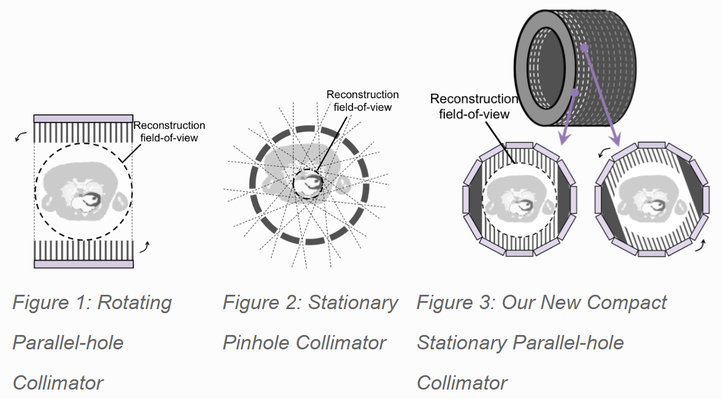Innovative Collimator for Compact Stationary SPECT
In Single Photon Emission Computed Tomography (SPECT) scanners, collimators are used in front of the detectors to help determine the direction from which gamma-rays originate. In order to reconstruct a 3D image of the radioisotope distribution, we need to measure radiation coming from the patient at different angles, and for this there are two main strategies: rotating parallel-hole collimators and stationary pinhole collimators.
We came up with and developed a new collimator concept, that marries the two approaches: a stationary parallel-hole collimator. Because it is stationary, it should be considerably cheaper, less time-consuming and provide better quality images than non-stationary SPECT scanners. On the other hand, because of its innovative design based on parallel-holes, we can image the same volume as other currently available stationary SPECT systems using a much more compact scanner, therefore saving both space and material costs.
Researcher: Lara Pato
